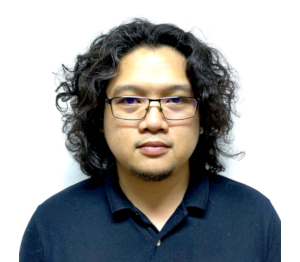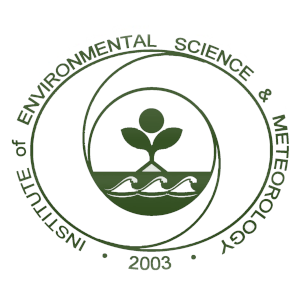
Bernard Alan B. Racoma, Ph.D
Assistant Professor
Contact: bbracoma[at]up.edu.ph
Educational Background:
- PhD in Atmosphere, Oceans and Climate (University of Reading, United Kingdom, 2024)
- PhD in Meteorology (University of the Philippines Diliman, 2023)
- MS Geology (University of the Philippines Diliman, 2016)
- BS Applied Physics (University of the Philippines, Diliman, 2011)
Research Interests and ProjectsTeachingPublicationsTraining/Workshops Attended
Research Interests
- Numerical Weather Prediction
- Tropical Cyclones
- Extreme Weather
- Disaster Risk Reduction and Mitigation
- Geographic Information Systems
- Remote Sensing
- Science Communication
Ongoing Research Projects
- Project staff, DOST-PCIEERD funded project on “Analysis of tropical cyclone rapid intensification in the Philippines: its characteristics, impacts, and future projections
Courses Taught
- Environmental Science
- Env Sci 1: Environment and Society
- Env Sci 265 and 265.1: Remote Sensing (lecture and laboratory)
- Meteorology
- Meteo 101: General Meteorology
- Meteo 221: Physical Meteorology
- Meteo 222: Satellite Meteorology
- Meteo 225: Cloud Physics
- Meteo 231: Dynamic Meteorology
- Meteo 296: Graduate Seminar
Publications
International
- Bagtasa, G., & Racoma, B. A. (2023). Does the Sierra Madre Mountain Range in Luzon Act as a Barrier to Typhoons? Philippine Journal of Science, 152 (S1), 63–77. https://philjournalsci.dost.gov.ph/publication/special-issues/meteorology/121-vol-152-no-s1-meteorology/1888-does-the-sierra-madre-mountain-range-in-luzon-act-as-a-barrier-to-typhoons
- Racoma, B. A. B., Holloway, C. E., Schiemann, R. K. H., Feng, X., & Bagtasa, G. (2023). The Effect of the Cordillera Mountain Range on Tropical Cyclone Rainfall in the Northern Philippines. Atmosphere, 14(4), https://doi.org/10.3390/atmos14040643
- Racoma, B. A. B., Klingaman, N. P., Holloway, C. E., Schiemann, R. K. H., & Bagtasa, G. (2021). Tropical cyclone characteristics associated with extreme precipitation in the northern Philippines. International Journal of Climatology, https://doi.org/10.1002/joc.7416
- Lagmay, M., & Racoma, B. A. (2019). Lessons from tropical storms Urduja and Vinta disasters in the Philippines. Disaster Prevention and Management: An International Journal. https://doi.org/10.1108/DPM-03-2018-0077
- Ybañez, R., Racoma, B.A., Ybañez, A.A., Balangue-Tarriela, M.I.R. (2018). Flood Susceptibility Assessment of Mt. Makiling, Philippines Using Two-Dimensional Meteorological and Hydrological Modelling. Philippine Journal of Science, 147 (3), 463-471
- Lagmay, A.M., Racoma, B.A., Aracan, K.A., Alconis-Ayco, J., & Saddi, I.L. (2017). Disseminating near-real-time hazards information and flood maps in the Philippines through Web-GIS. Journal of Environmental Sciences 59, 13-23. http://doi.org/10.1016/j.jes.2017.03.014
- Racoma, B.A., David, C.P., Crisologo, I. A., Bagtasa, G., (2016), The Change in Rainfall from Tropical Cyclones due to Orographic Effect of the Sierra Madre Mountain Range in Luzon, Philippines. Philippine Journal of Science, 145 (4), 313-326 https://philjournalsci.dost.gov.ph/home-1/50-vol-145-no-4-december-2016/617-the-change-in-rainfall-from-tropical-cyclones-due-to-orographic-effect-of-the-sierra-madre-mountain-range-in-luzon-philippines
- Lagmay, A. M. F., Bagtasa, G., Crisologo, I. A., Racoma, B. A. B., & David, C. P. C. (2015). Volcanoes magnify Metro Manila’s southwest monsoon rains and lethal floods. Frontiers in Earth Science, 2. http://doi.org/10.3389/feart.2014.00036
- Heistermann, M., Crisologo, I., Abon, C. C., Racoma, B. A., Jacobi, S., Servando, N. T., David, C. P., & Bronstert, A. (2013). Brief communication: Using the new Philippine radar network to reconstruct the “Habagat of August 2012” monsoon event around Metropolitan Manila. Natural Hazards and Earth System Science, 13 (3), 653–657. http://doi.org/10.5194/nhess-13-653-2013
Local
- Racoma, B.A., Crisologo I.A., David, C.P. (2015). Accumulation-based Advection Field for Rainfall Nowcasting. Journal of the Philippine Geosciences and Remote Sensing Society, 1(1),21-26,
- David, C. C., Racoma, B. B., Gonzales J., and Clutario M. (2013). A Manifestation of Climate Change? A Look at Typhoon Yolanda in Relation to the Historical Tropical Cyclone Archive. Science Diliman, 25, No 2. 79-86
- Thesis/dissertation writing, advising, and paneling techniques. Organized by International Association of Scholarly Publishers, Editors, and Reviewers, Inc. Online. 3-4 October 2022.
- Introduction to the WRF modelling system. m2lab.org. Online course. 16-19 June 2020
- Introduction to the Unified Model with Rose and Cylc. National Centre for Atmospheric Science, National Environment Research Council. University of Reading, Berkshire, United Kingdom. 3-5 April 2019.
- NASA Land Cover/Land Use Change (LC/LUC) SARI Advanced Training in Remote Sensing and Geospatial Technologies. Organized by Institute of Environmental Science and Meteorology, University of the Philippines Diliman, Quezon City, Philippines. 31 May – 2 June 2018.
- Malaysia Window to Cambridge at Universiti Kebangsaan Malaysia: Training Workshop on the Predictability of Extreme Weather Events. Malaysian Meteorological Department, Petaling Jaya, Malaysia. 13-16 November 2017
- 2017 Advanced Institute on Disaster Risk Reduction with Systems Approach for Slow-Onset Climate Disasters (AI-SOCD): Air Pollution, Sensors, and Big Data. Academia Sinica, Taipei, Taiwan. 10-14 July 2017
- Southeast Asia International Joint-Research and Training Program (SEAIP) 2015: Cloud Computing & Internet of Things. Organized by National Applied Research Laboratories National Center for High-Performance Computing, Ministry of Science and Technology, Taiwan. 7-10 December 2015
- 8th KAGI21 International Spring School: Kyoto University Active Geosphere Investigations for the 21st Century. Kyoto University, Japan. 3-10 March 2015
- International Training Programme on Flood Risk Mapping, Modeling and Assessment using Space Technology. Jointly organized by CSSTEAP, UNOOSA/UN-SPIDER, UNESCAP and IWMI. Dehradun, India, 22-26 July 2013.
- Training Course on Flood Modeling and Lidar Analysis. Conducted in DOST-PAGASA by ITC and GIZ. Metro Manila, Philippines, 20-31 May 2013.
- Doppler Weather RADAR Processing and Flood Modeling Training. Conducted in Universität Potsdam, Germany. February 2012
